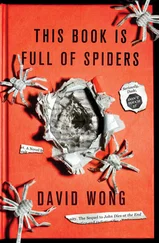– D.L.
8 EXAMPLES OF STRANGE ANIMAL BEHAVIOUR
GENTLE CROCODILES
Nile crocodiles, although physically and morally capable of killing humans, are tender guardians of their own babies. Newborn crocodiles average 28 cm (11 inches) in length and weigh 100 grams (3½ ounces) — tempting prey for a wide range of predators. To protect them when they emerge from their shells, a mother crocodile delicately picks up the hatchlings with her deadly jaws and slips them into a pouch inside her mouth. Then she carries the chirping babies to the water where they are greeted by a roaring chorus from the adult males.
TRANSFORMER FROGS
The female gastric brooding frog (Rheobatrachus silus), which flourished in Queensland, Australia, until its recent extinction, swallowed her fertilised eggs, transformed her stomach into a uterus, carried the developing tadpoles in her stomach, and then gave birth to fully formed young through her mouth.
FARMER ANTS
Aphids produce a sugary excrement, which has come to be known as honeydew, by licking the leaves and stems on which it has fallen. But some ant species have learned to gather the aphids into their nests, feed them, and then when the ants are hungry, to stroke the aphids with their feelers so that they produce the honeydew, which the ants then drink fresh.
INCESTUOUS MITES
The female mite known as Histiostoma murchiei creates her own husband from scratch. She lays eggs that turn into adults without needing to be fertilised. The mother then copulates with her sons within three of four days of laying the eggs, after which the sons die rather quickly.
NON-NURTURING CUCKOOS
Female cuckoos deposit their eggs in the nests of other birds, who then incubate the eggs and raise the offspring until they are able to fly away on their own. Curiously, each individual cuckoo mother chooses the same species to adopt all of her children and is able to lay eggs that resemble the eggs of the foster family.
CODEPENDENT ANGLER FISH
As soon as they mature sexually, male angler fish begin a desperate search to find a mate in the dark water 6,000 feet below the surface. As soon as they locate likely prospects, certain species of angler fish attach themselves to the females — literally. The male latches on to the much larger female and never lets go for the rest of his life. In fact, their vascular systems become united and the male becomes entirely dependent on the female’s blood for nutrition. In exchange, the male provides the female with sperm.
CHILD-LABOURING ANTS
Several species of tree ants in Southeast Asia have evolved a bizarre method for building their nests. While one brigade of ants holds together two leaves, another brigade grabs hold of ant larvae and squeezes out of their young bodies a sticky thread that is used to hold together the edges of the leaves.
TORTURING, MURDEROUS WASPS
Ichneumon wasps are the sort of beings that inspire horror films. At the worst, an ichneumon mother picks a victim, usually a caterpillar, and injects her eggs into the host’s body. Often she also injects a poison that paralyses the victim without killing it. When the eggs hatch, the wasp larvae begin eating the caterpillar. Because a dead caterpillar would be useless to developing wasps, they contrive to keep the unfortunate victim alive as long as possible by eating its fatty deposits and digestive organs first and saving the heart and central nervous system for last.
MAXIMUM RECORDED LIFESPAN OF 58 ANIMALS
1. Tortoise 188 years
2. Lake Sturgeon 152 years
3. Human 122 years, 5 months
4. Fin Whale 116 years
5. Blue Whale 110 years
6. Humpback Whale 95 years
7. Elephant (African) 80 years
8. Turtle (eastern box) 75 years
9. Parrot (African grey) 73 years
10. Alligator 66 years
11. Horse 62 years
12. Chimpanzee 59 years, 5 months
13. Orangutan 59 years
14. Eagle (eastern imperial) 56 years
15. Seal (Baikal) 56 years
16. Hippopotamus 54 years, 4 months
17. Gorilla 54 years
18. Camel 50 years
19. Grizzly Bear 50 years
20. Rhinoceros (Indian) 49 years
21. Brown Bear 47 years
22. Condor (California) 45 years
23. Goldfish 43 years
24. Hyena (spotted) 41 years, 1 month
25. Boa constrictor 40 years, 3 months
26. Vulture 39 years
27. Polar Bear 38 years, 2 months
28. Giraffe 36 years, 4 months
29. Dolphin 35 years
30. Rhinoceros (Sumatran) 35 years
31. Cat 34 years
32. Ant (queen) 30 years
33. Kangaroo (red) 30 years
34. Panda (giant) 30 years
35. Dog 29 years, 6 months
36. Lion 29 years
37. Porcupine (Old World) 27 years, 4 months
38. Tiger 26 years, 4 months
39. Wombat 26 years, 1 month
40. Aardvark 24 years
41. Sheep 24 years
42. Jaguar 22 years
43. Raccoon 20 years, 7 months
44. Frog 20 years
45. Koala 20 years
46. Porcupine (normal) 20 years
47. Vampire Bat 19 years, 6 months
48. Pigeon 18 years, 6 months
49. Rabbit 18 years
50. Duck-billed Platypus 17 years
51. Guinea Pig 14 years, 10 months
52. Hedgehog 14 years
53. Shrew (non-human) 12 years
54. Hamster 10 years
55. Gopher (eastern pocket) 7 years, 2 months
56. Anchovy 7 years
57. Partridge 6 years, 3 months 58. Mole 5 years
Primary Source: Max Planck Institute web site http://www.demogr.mpg.de/; also Longevity Records: Life Spans of Mammals, Birds, Amphibians, Reptiles, and Fish , by James R. Carey and Debra S. Judge
7 EXTINCT ANIMALS THAT ARE NO LONGER EXTINCT
1. CAHOW
This ocean-wandering bird nested exclusively on the islets of Bermuda. Also known as the Bermuda petrel, the last of the cahows was believed to have been killed during the famine of 1615, when British colonists built cook-fires into which the unwary cahows flew by the thousand. On January 8, 1951, the cahow was rediscovered by Bermuda’s conservation officer, David Wingate. Under his protection, the existing 18 birds were encouraged to breed, and now number more than 150.
2. DIBBLER
A marsupial mouse, the dibbler was listed as extinct in 1884. In 1967 an Australian naturalist hoping to trap live honey possums, caught instead a pair of dibblers. The female of the captured pair soon produced a litter of eight, and they were then bred in captivity.
3. DWARF LEMUR
The last known dwarf lemur was reported in 1875, and was regarded as extinct. Then in 1966 the small tree-dwelling marsupial was once again seen, near the city of Mananara, Madagascar.
4. MOUNTAIN PYGMY POSSUM
This small marsupial was considered to have been extinct for 20,000 years until Dr Kenneth Shortman caught one in the kitchen of his skiing lodge, Mount Hothan, in southeast Australia in 1966. Three more of the tiny possums were discovered in 1970.
5.-6. TARPAN and AUROCHS
A primeval forest horse of central Asia and long extinct, the tarpan was recreated by brothers Lutz and Heinz Heck, curators of the Berlin and Munich zoos, respectively. By selective crossbreeding of Polish primitive horses with Swedish Gotlands, Icelandic ponies and Polish Konik mares, they created a strain of wild horse identical in appearance to what we know of the mouse-gray tarpan. The first colt was born on May 22, 1933. By this same method, the aurochs, a European wild ox which died out in Poland in 1627, have also been duplicated.
7. WHITE-WINGED GUAN
A flower-eating South American bird, the guan was thought extinct for a century until sighted in September of 1977. An American ornithologist and his Peruvian associate located four of the pheasant-sised birds in remote northwestern Peru.
Читать дальше












